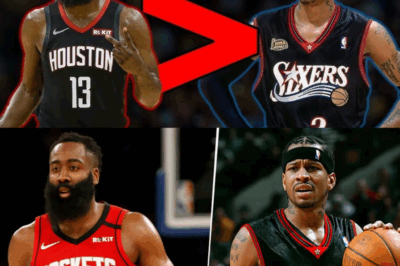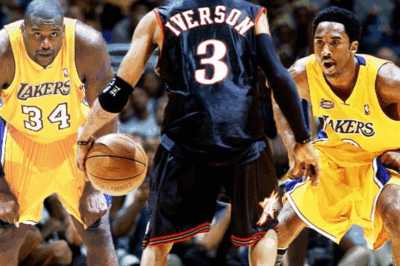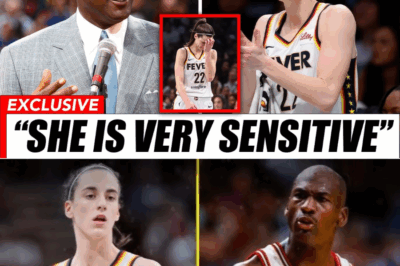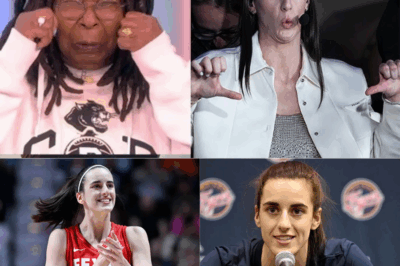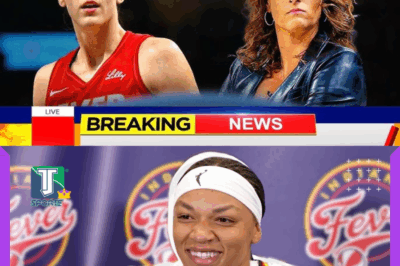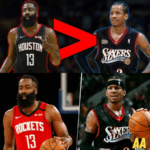Instant Envy Hits Angel Reese as Caitlin Clark’s Nationally Televised Games Outnumber the NBA’s Broadcasts – A Deep Dive into WNBA Stars’ Media Visibility and Recognition
In the rapidly changing landscape of women’s sports, the rise of Caitlin Clark has captivated the sports world in a way few can ignore.
With her incredible performances on the basketball court, the Iowa Hawkeyes star has gained a monumental following, transcending the boundaries of college sports and becoming a household name.
While the NBA has long been the dominant force in professional basketball, Clark’s increasing prominence is putting a spotlight on the limitations of media coverage for women’s sports, and it is stirring a significant response, even from her WNBA counterparts.
One of the most notable reactions to Clark’s rising star power comes from Angel Reese, one of the most talented players in the WNBA.
:max_bytes(150000):strip_icc():focal(749x0:751x2)/caitlin-clark-angel-reese-tout-070324-167d0eda0af04db1852736b4a67ac98f.jpg)
Reese, a player known for her determination and skill on the court, recently voiced her concerns as she watched Clark’s media presence grow to the point where her nationally televised games were outnumbering the very broadcasts that the NBA itself commanded.
The growing disparity between the visibility of women’s and men’s sports raises questions about the future of sports media, gender equality in athletics, and the roles of athletes as influencers in this new era of media consumption.
Caitlin Clark’s Meteoric Rise: More Nationally Televised Games than the NBA?
Caitlin Clark’s dominance in college basketball has been nothing short of historic. Since her breakout season at Iowa, where she led her team to the NCAA Women’s Basketball Tournament’s final stages, Clark has consistently found herself in the spotlight.
Her ability to score, facilitate, and make game-changing plays has earned her a reputation as one of the most talented players in the sport, making her a favorite for national television broadcasters.
But what has been particularly striking is the frequency with which her games have been broadcasted on national TV.
In a stark contrast to the WNBA, Clark has secured a level of media coverage that surpasses many professional athletes in both men’s and women’s sports.
Her matches have become a mainstay on ESPN, ABC, and even networks like CBS during marquee matchups, while the NBA’s media presence appears to have plateaued in comparison.
While the NBA still commands immense viewership, Clark’s rise challenges the typical narrative of men’s sports being the primary focus of the media landscape.
Her games have attracted millions of viewers, outpacing NBA broadcasts in some instances, especially when considering regular season games.
This unparalleled visibility is sparking a new level of interest in women’s college basketball and shining a light on the underrepresentation of female athletes in televised sports.
But this surge in viewership comes with its own set of complications.

Angel Reese’s Response to the Growing Media Divide
As one of the brightest stars in the WNBA, Angel Reese’s perspective on the imbalance of media coverage is significant.
Reese, who has built a name for herself as an elite player, has voiced her frustration over the lack of national broadcasts and media attention for the WNBA in comparison to Clark’s increasing visibility.
Reese’s comments suggest a sense of competition, but not in the traditional sense. Instead, they reflect the competitive nature of securing attention and exposure in a world that often overlooks women’s sports.
For Reese, it’s clear that the media’s investment in Clark is a double-edged sword.
While she acknowledges Clark’s talent and understands the appeal of her storyline, Reese also sees it as a missed opportunity for the WNBA to gain the same level of media attention and sponsorship.
Reese’s desire for more television opportunities is not rooted in jealousy, but rather in a recognition of the work that female athletes, particularly those in the WNBA, have put in to build their brand and their sport.
The Role of Media in Shaping Sports Perception
The media plays an undeniable role in shaping the public’s perception of sports, and its focus on certain athletes over others can have long-lasting effects on the careers of both male and female players.
The fact that Clark’s games are getting more airtime than NBA contests speaks to a broader issue of gender disparity within sports broadcasting.
Historically, women’s sports have struggled to gain the same attention as men’s sports, with a heavy emphasis on the NFL, NBA, MLB, and NHL dominating mainstream sports networks.
However, this imbalance is beginning to shift.

The increasing demand for women’s sports content—fueled by the success of players like Clark, Reese, and other rising stars—demonstrates that there is a growing appetite for women’s athletic achievements.
Fans want to see more of these athletes, hear their stories, and watch them compete at the highest level.
Yet the fight for visibility remains a constant challenge, one that Clark’s rise highlights.
The Impact of Social Media and Streaming Platforms on Athlete Visibility
One key factor in Clark’s rise to prominence is the role that social media and streaming platforms have played in increasing her exposure.
Traditional sports broadcasting networks like ESPN have been crucial to her success, but her digital presence has expanded the reach of her games even further.
Platforms like Twitter, Instagram, TikTok, and YouTube have become pivotal in shaping the careers of athletes, enabling them to reach a global audience without the constraints of traditional broadcast schedules.
Clark has utilized these platforms to engage directly with fans, giving them a behind-the-scenes look at her life, thoughts, and performances.
Her personality and approachability have only amplified her appeal, allowing her to transcend the court and connect with viewers on a deeper level.
The fact that her games are broadcasted more frequently than NBA games, despite the massive media infrastructure behind the NBA, speaks volumes about the power of digital media and the shift in how we consume sports.
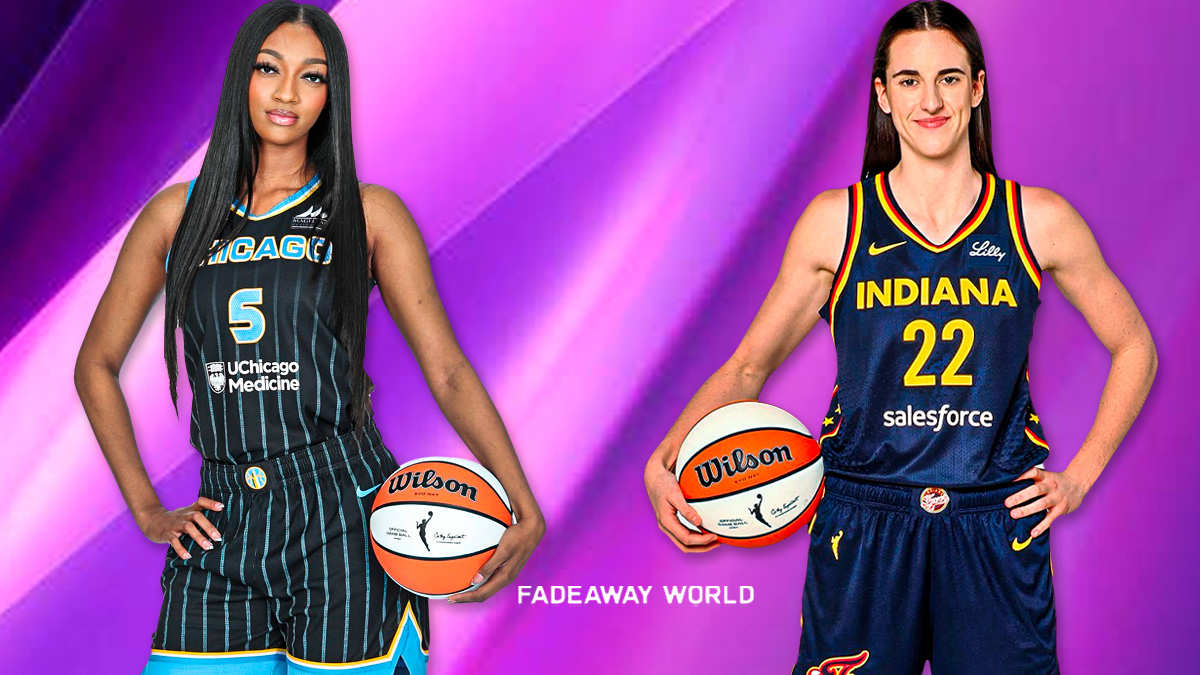
Breaking the Mold: Is This the New Era of Sports Media?
Clark’s rise signals a potential turning point for the world of sports media. As women’s sports gain more traction, the landscape may shift dramatically, pushing for more equitable media coverage and recognition.
But in order for this shift to be sustained, it will require sustained efforts from broadcasters, sponsors, and the athletes themselves.
Reese’s remarks, though pointed, serve as a call to action for both media organizations and fans alike to recognize the value and potential of women’s sports.
Both Clark and Reese represent the future of women’s sports, but their journeys highlight the challenges that come with competing for visibility in a media ecosystem that has long been skewed in favor of male-dominated sports leagues.
The success of these athletes will depend on the continued evolution of sports media, and their growing influence on platforms like social media and streaming services will likely play a significant role in making that happen.
The Importance of Supporting Women’s Sports Going Forward
For the WNBA and other women’s sports leagues to thrive, they must continue to build their own narratives and gain the support of fans, broadcasters, and advertisers.
The rise of Caitlin Clark is an inspiring example of what can happen when an athlete, regardless of gender, is given the opportunity to showcase their skills on a national stage.
As Clark’s games continue to captivate audiences, the question remains: what does the future hold for women’s sports in the world of media?
Angel Reese’s comments shed light on the ongoing struggle for media equity in sports, and the national television coverage of Clark’s games serves as a reminder of the progress that is still to be made.
As we move forward, it is essential to champion women’s sports, not just for the athletes who deserve the recognition, but for the fans who are eager to support them.
In a world where visibility equals opportunity, the hope is that Reese, Clark, and countless other athletes will continue to break barriers, both on and off the court, paving the way for a more inclusive and diverse sports media landscape.
News
James Harden Just SMASHED Allen Iverson’s Legacy—Here’s the UNDENIABLE Proof
James Harden Just SMASHED Allen Iverson’s Legacy—Here’s the UNDENIABLE Proof The NBA has been graced by a plethora of talented…
The TRUTH About Iverson’s DOMINATION Over Kobe & Shaq—The Game That Changed Everything
The TRUTH About Iverson’s DOMINATION Over Kobe & Shaq—The Game That Changed Everything On June 6, 2001, the basketball world…
Michael Jordan DROPS TRUTH BOMB on Caitlin Clark—You Won’t BELIEVE What He Said
Michael Jordan DROPS TRUTH BOMB on Caitlin Clark—You Won’t BELIEVE What He Said In a development that has reverberated across…
CAITLIN CLARK SHUTS DOWN RUDE HOST ON LIVE TV! Her UNFILTERED Clapback Stuns Audience—You Won’t Believe What She Said
CAITLIN CLARK SHUTS DOWN RUDE HOST ON LIVE TV! Her UNFILTERED Clapback Stuns Audience—You Won’t Believe What She Said In…
Angel Reese Throws Shade at Caitlin Clark Again: Fans React Wildly to Latest WNBA Drama
Angel Reese Throws Shade at Caitlin Clark Again: Fans React Wildly to Latest WNBA Drama In the ever-evolving landscape of…
Emotional Fever Win Leaves Iowa in Tears! Caitlin Clark & Makayla Timpson’s Heartfelt Reaction Will Give You Chills! Coach Stephanie White’s Speech? UNREAL!
Emotional Fever Win Leaves Iowa in Tears! Caitlin Clark & Makayla Timpson’s Heartfelt Reaction Will Give You Chills! Coach Stephanie…
End of content
No more pages to load

